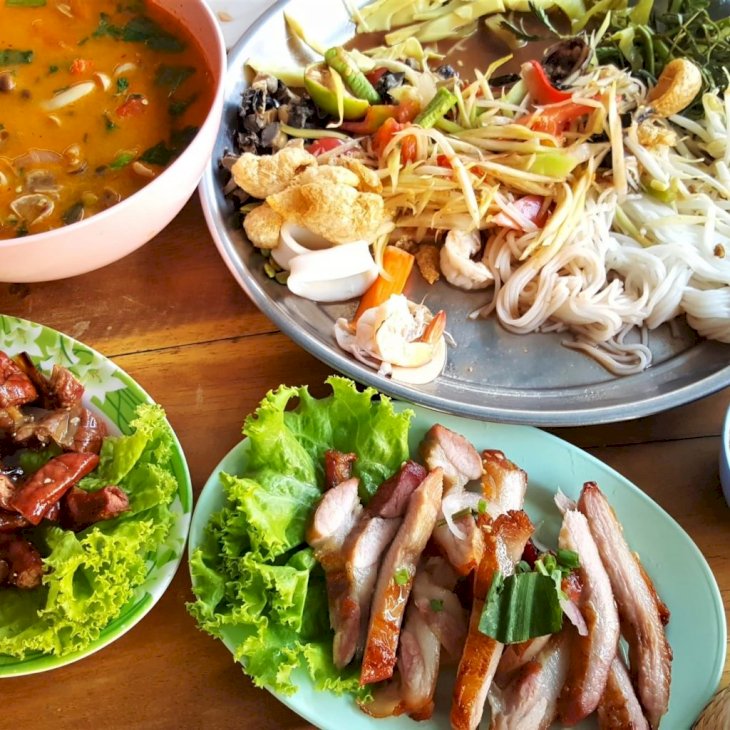
A Glimpse At The Healthiest Traditional Cuisines Around The World
Fast food and instant meals have slowly taken over our diets. Thus it is no surprise that surveys found that in 2016 more than 1.9 billion adults aged 18 years and older were overweight.
However, there are alternative options to avoid unhealthy Americanized diets. Here is a look at 5 ethnic cuisines that are much healthier for you and still relatively easy to cook at home.
Japanese

Photo by Mgg Vitchakorn on Unsplash
Japanese cuisine is known for being rich in seafood and fresh vegetables. The traditional diet is so healthy that people who live on the Japanese island of Okinawa are considered to be part of the blue zone and have the lowest rates of chronic disease and the longest life span in the world.
“The cuisine of Japan is generally considered to be healthy, with loads of vegetables and seafood in healthy preparations, such as a light steam or a quick stir-fry. Not to mention, uncooked sea vegetables, edamame, and raw fish. On the unhealthier side, watch out for fried tempura, oily noodle dishes, and white rice.”
explains Marci Clow, M.S., R.D.N., a senior nutritionist at Rainbow Light.
Greek

Photo by Louis Hansel @shotsoflouis on Unsplash
Another country whose traditional food is packed with goodness is Greece. Greek food combines the best elements of the Mediterranean region cuisines to create delicious and healthy food.
The popular Mediterranean diet originated on the Greek island of Crete. According to research, Cretans have a high life expectancy and lower risk of heart disease because of the food they choose to eat. Opt for dishes like grilled fish, souvlaki, and louvi (black-eyed bean salad) and avoid too many high-fat dishes, such as spanakopita (spinach pie), baklava, and moussaka.
“This diet has lots of olive oil, not much meat, is big on yogurt and lots of fresh fruits, vegetables, garlic, tomatoes, and nuts,”
says pediatric nutritionist and dietician Keith Ayoob, Ed.D., R.D., F.A.D.A., an associate clinical professor at Albert Einstein College of Medicine.
Korean

Photo by Vicky Ng on Unsplash
Korean food has become extremely popular because it is both flavorsome and healthy. Th basis of many Korean dishes is kimchi, a fermented vegetable dish. Kimchi is considered a probiotic and boasts anti-cancer, anti-obesity, and cholesterol-lowering properties. However, be careful to avoid high sodium content.
“Tons of vegetables here, not much fat, very big on rice and steamed foods. Culturally, this cuisine isn’t known for lots of snacking; it’s more of a meal-oriented focus on food.”
says pediatric nutritionist and dietician Keith Ayoob,
Spanish

Photo by Kaitlin Dowis on Unsplash
Another Mediterranean country on the list is Spain. Spanish cuisine is considered healthy because it is packed with fresh seafood and vegetables as well as the unique style of eating unhealthier foods in the form of tapas.
“Spain is famous for its tapas, or small plates, giving Spain kudos for one of the only countries with an attempt at portion control.
says Marci Clow, M.S., R.D.N., a senior nutritionist at Rainbow Light.
Thai

Photo by Jerome Jome on Unsplash
Last but not least, no healthy eating list would be complete without traditional Thai dishes. Thai food commonly includes fruits, veggies, lean meats, seafood, lime, rice, noodles, and coconut as well as spices like inflammation-fighting turmeric and digestion-aiding ginger.
However, it is important to avoid dishes made with too much coconut milk or coconut oil as they can cause artery-clogging. Another tip is to always ask for sauces on the side instead of on the dish so that you can control how much you use as they may be high in sugar or sodium.